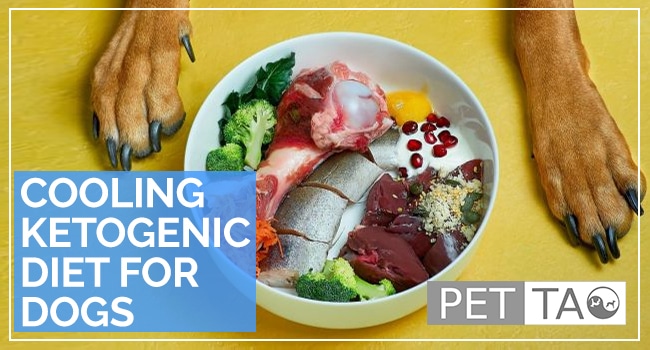Why Feed Cooling Ketogenic Dog Food?
There are several reasons pet parents choose to feed cooling ketogenic dog food.
For example, some people feel feeding a ketogenic diet is more like the “primal diet” for dogs. Accordingly, they feel feeding keto will keeping their dog healthier.
Also, some people choose a ketogenic diet to help with specific health challenges like:
- diabetes
- seizures
- cancer
Cooling Ketogenic Dog Food Recipe
We feel feeding dogs a TCVM energetically appropriate diet is best for pets, even when you choose to feed in ketogenic ratios.
Below is the recipe for a cooling ketogenic diet for dogs.
A cooling diet helps dogs suffering who:
- Pace at night
- Pant excessively
- Eat grass
- Prefer cool surfaces
- Act agitated
- Live in a warm climate
A keto diet contains:
- 47%-57% Fat
- 28% -38% Protein – mostly from meat
- A maximum of 15% Carbohydrates
Use the list of foods below to create endless delicious recipe combinations!
Then, simply mix up the below ingredients as needed to create a food that your dog loves. Of course, you need to make sure the recipe fits the protein, fat, and carbohydrate ratios listed above.
You can use an online food log to easily track protein, carbohydrate, and fat ratios. For example, online food logs on websites like Fitbit and Livestrong will calculate ratios.
The ingredients listed below are all cooling or neutral. It’s best to stick to all cooling food items, but you may add one neutral item per batch for convenience.
We recommend using coconut oil as the fat choice, as coconut oil naturally contains 45% – 65% MCTs. MCT’s also help prevent seizures.
You can further increase your dog’s MCT intake by purchasing a canine MCT supplement and following the label instructions.
Cooling Meats/Protein Source
- Carp (neutral)
- Clam
- Cod
- Crab
- Duck
- Eggs (neutral)
- Goose (neutral)
- Herring (neutral)
- Kidney, pork (neutral)
- Liver, beef (neutral)
- Liver, sheep
- Mackerel (neutral)
- Oyster (neutral)
- Pigeon (neutral)
- Pork (neutral)
- Quail (neutral)
- Rabbit
- Sardine (neutral)
- Tofu
- Turkey
- Tuna (neutral)
- Whitefish (neutral)
- Yogurt
Cooling Vegetables
- Alfalfa
- Asparagus (neutral)
- Broccoli
- Cabbage (neutral)
- Carrot (neutral)
- Cauliflower (neutral)
- Celery
- Cucumber
- Dandelion leaf
- Eggplant
- Lettuce
- Mushroom, button
- Spinach
- Squash
- Swiss Chard
- Tomato
Cooling Fats
- Coconut oil (adds MCT)
- Black sesame oil
- Flaxseed oil
- Peanut oil (neutral)
- Sesame oil
- Soybean oil
Sample Energetically Cooling Ketogenic Dog Food Recipe
To make the recipe at home, you will need:
- 5 pounds meat (see “protein” list above)
- 1.5 pounds of vegetables (see “vegetable” list above)
- 1 egg
- 4 tablespoons of coconut oil
Directions:
First, debone and chop meat and vegetables.
Next, place all ingredients in crockpot layering:
- Slow cooking root vegetables on the bottom
- Meat in the middle
- Fast cooking items on top
Then, top with 1 cup of water.
Afterward, cook on low for 4 hours.
In addition, add the following to your pet’s diet:
- One canine multivitamin per day. Our vets recommend PET | TAO Daily Vitamins.
- Calcium supplement 22mg/lb of body weight per day. Some other good choices for calcium are eggshell powder or bone meal. (If using bone meal, please note the calcium content. Then, calculate 22mg/lb of body weight from the calcium content. Do not calculate from the overall bone meal content.)
Feeding Schedule:
- Feed roughly 1.5 cups per 25 pounds of body weight twice daily.
- Monitor your pet’s weight. If an undesirable weight loss occurs, please contact your veterinarian. Your vet will help you can make an adjustment in the feeding/diet plan.
Do you want to learn more about food therapy and how to help your dog at home?








